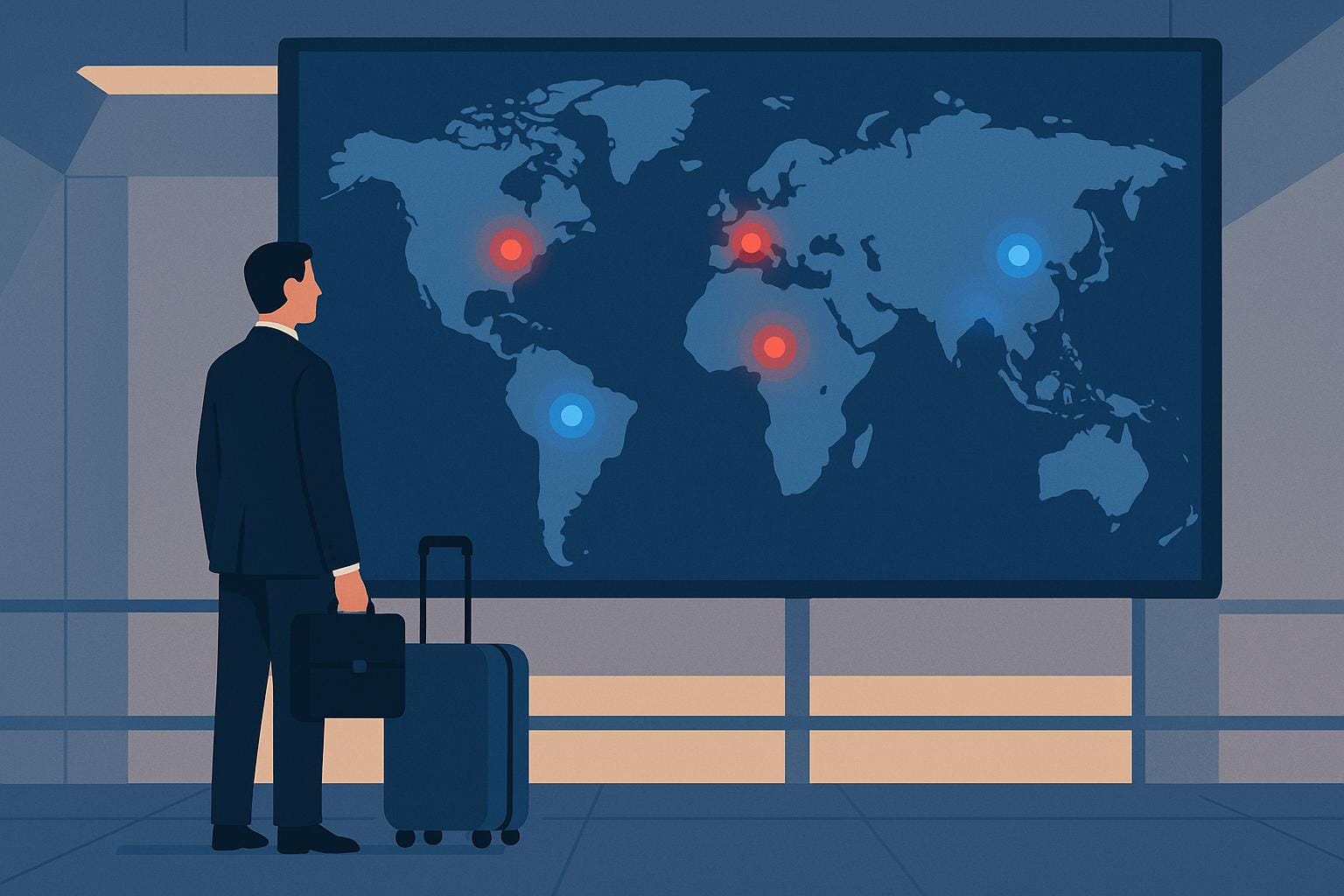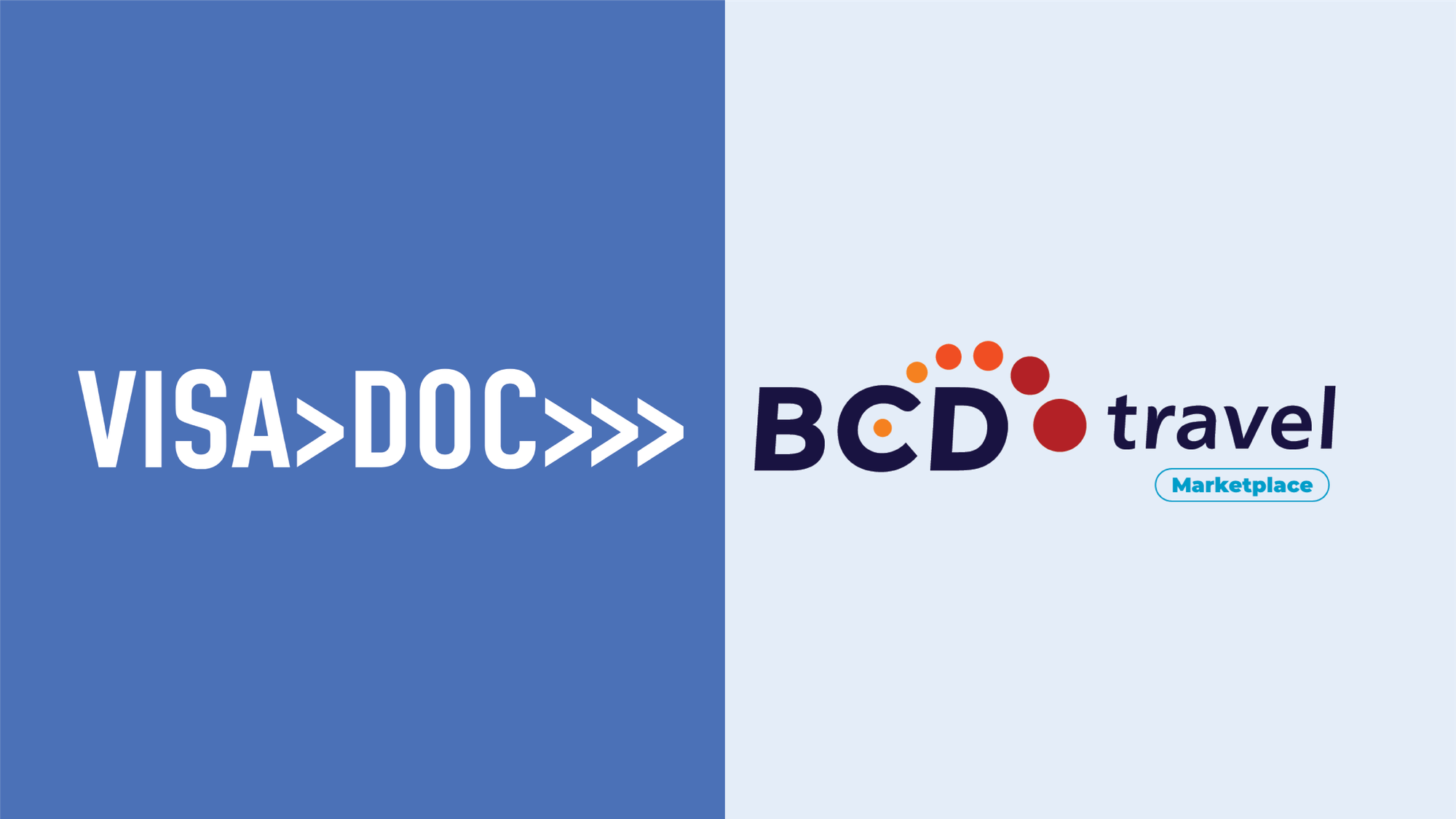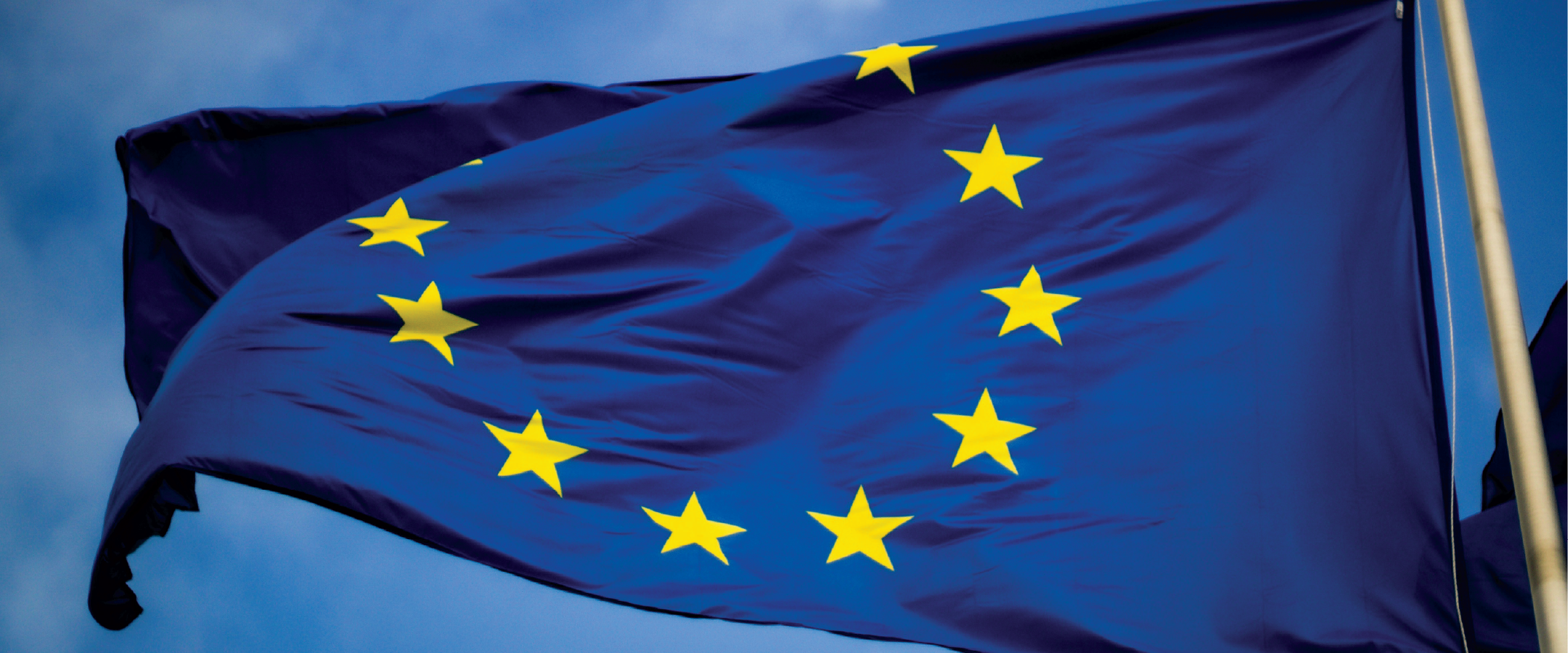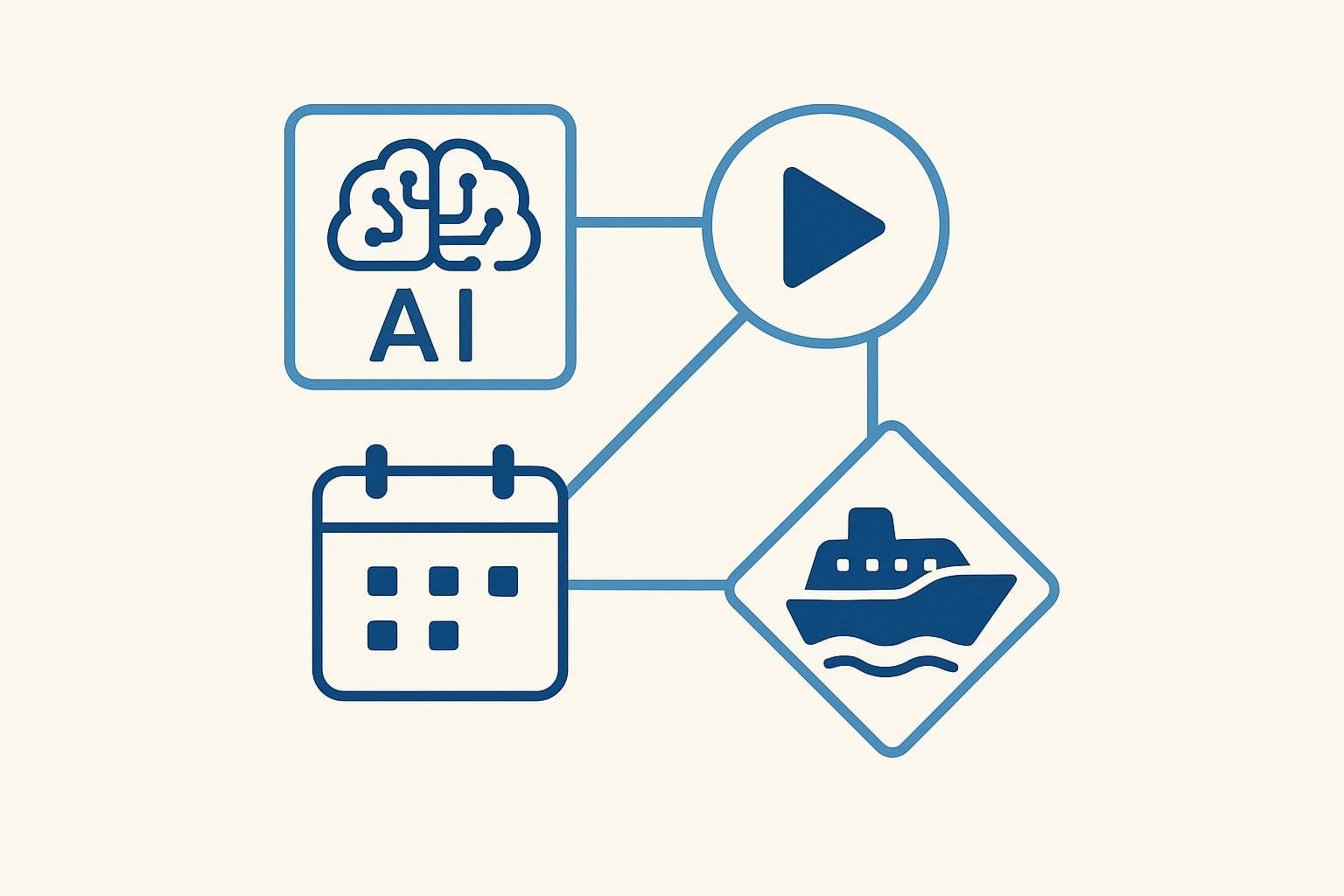Geopolitical risks are reshaping business travel in 2025. Political conflicts, airspace restrictions, and changing visa rules are driving up costs and complicating logistics for companies worldwide. For example, the Russia–Ukraine conflict has extended flight times and increased operational expenses, while new border control systems like ETIAS add more paperwork and delays.
Key Takeaways:
- Rising Costs: Longer flight routes, higher fuel consumption, and increased insurance premiums.
- Visa Challenges: Stricter requirements and prolonged processing times.
- Safety Concerns: Civil unrest and conflict zones demand robust emergency plans.
- Digital Tools: Platforms like VisaDoc simplify visa management and compliance.
- Risk Management: Real-time monitoring and tailored travel insurance are essential.
Businesses must adapt by combining smarter risk assessment methods, digital tools, and flexible travel policies to protect employees and control costs effectively.
Types of Geopolitical Risks in Business Travel
Common Geopolitical Risk Types
Geopolitical challenges continue to complicate international business travel in 2025. Conflicts like those in Ukraine and between Israel and Hamas have caused disruptions, with airspace restrictions forcing travellers to seek alternative routes. Political instability takes several forms, such as:
- Armed conflicts, which can make routes unsafe and disrupt travel plans
- Trade sanctions, limiting the scope of business operations
- Civil unrest, interfering with local operations and logistics
- Diplomatic tensions, leading to stricter visa requirements and travel restrictions
These issues create a complex landscape for business travel, as explored further below.
Business Travel Challenges
New border control measures, like the Schengen Entry/Exit System (EES) and the European Travel Information and Authorization System (ETIAS), have introduced additional layers of administration for travellers. Airlines are also rerouting flights to avoid conflict zones, leading to longer journeys and increased costs.
Here’s a quick look at the key challenges business travellers face:
| Risk Factor | Impact on Business Travel |
|---|---|
| Border Controls | Longer processing times and extra paperwork |
| Flight Routes | Lengthier travel times and higher operational expenses |
| Security Protocols | Stricter screening measures and potential travel restrictions |
| Visa Processing | More complicated applications and extended waiting periods |
Trade and Economic Effects
The ripple effects of geopolitical risks aren’t limited to logistics - they also create financial challenges. Political instability often leads to currency volatility, making it harder for businesses to manage budgets as exchange rates shift unpredictably. Sanctions and trade barriers may force companies to rethink travel plans, while rising costs for insurance, security, and compliance add to the financial strain.
To tackle these pressures, businesses are turning to advanced travel risk management solutions. These include real-time monitoring of global events and implementing flexible travel policies to adapt to the ever-changing landscape.
Risk Assessment and Planning
Risk Analysis Methods
Geopolitical risks demand detailed and structured analysis. One widely used tool is the PESTLE framework, which evaluates Political, Economic, Social, Technological, Legal, and Environmental factors that could influence business travel. This method helps organisations pinpoint potential disruptions before they escalate into significant issues.
Another valuable tool is threat mapping, which provides a visual representation of risk levels, highlighting high-risk zones and identifying safer travel corridors.
| Factor | Key Considerations | Impact |
|---|---|---|
| Political Factors | Government stability, conflicts | Direct effect on travel safety |
| Economic Elements | Currency volatility, sanctions | Impacts budget and operational costs |
| Security Status | Civil unrest, terrorism risks | Affects route planning and alternatives |
| Legal Framework | Visa changes, travel restrictions | Compliance and regulatory requirements |
These methods form the foundation for preparing practical and effective travel safety measures.
Travel Safety Preparation
Establishing robust pre-travel safety protocols is critical. The UK Foreign, Commonwealth & Development Office (FCDO) travel advisories are a good starting point for assessing risks. Additionally, organisations should secure comprehensive insurance that includes cover for political evacuations and medical emergencies.
With geopolitical instability expected to rise in 2025, businesses should consider negotiating tailored corporate travel insurance plans. These plans should provide higher coverage limits and fewer exclusions, especially for employees travelling to high-risk areas.
Key preparation steps include:
- Destination briefing and cultural training: Ensures employees are aware of local customs and potential challenges.
- Emergency protocols: Clearly defined communication channels and evacuation procedures.
- Documentation review: Ensures compliance with travel documentation requirements.
- Security arrangements: Coordination with local partners for on-the-ground support.
Event Monitoring Systems
After completing a thorough risk analysis, real-time monitoring becomes essential to managing risks effectively. Many organisations now rely on multi-layered monitoring systems that combine AI-driven analytics with human expertise. These systems track a range of risk indicators, such as:
- Political developments impacting travel routes
- Civil unrest and security incidents
- Changes in border control measures
- Transportation disruptions, including airspace restrictions
By integrating these monitoring tools with travel management platforms, companies can respond quickly to disruptions. This ensures smooth operations and prioritises employee safety.
For a more proactive approach, some companies have established dedicated security operations centres. These centres provide round-the-clock global surveillance, enabling swift responses to emerging threats and reinforcing the safety of travelling employees.
Digital Tools for Risk Management
Modern technology is reshaping how businesses handle geopolitical risks during travel. By simplifying compliance and boosting efficiency, these tools ensure smoother operations and better risk management for travellers.
Visa Management Systems
Navigating visa requirements has become trickier with changing global politics, but digital platforms are stepping in to make the process easier. For example, VisaDoc offers automated visa processing and compliance monitoring, helping businesses stay ahead of regulatory changes. The platform provides real-time updates on entry requirements and flags potential compliance issues before they become problems.
Here’s what to look for in a robust visa management system:
| Feature | Purpose | Business Impact |
|---|---|---|
| Automated Processing | Simplifies visa applications | Saves time and improves efficiency |
| Compliance Monitoring | Tracks regulatory updates | Reduces risks of non-compliance |
| Document Verification | Ensures accuracy and completeness | Minimises application rejections |
| Integration Capabilities | Connects with HR systems | Streamlines internal workflows |
Travel Alert Platforms
Real-time alerts are another critical tool for managing risks. These platforms gather data from multiple sources to notify travellers about emerging threats, enabling quicker responses. Organisations using such systems have reported a 42% drop in travel-related security incidents.
Key features of effective travel alert platforms include:
- Granular Geographic Specificity: Alerts tailored to specific regions or even neighbourhoods.
- Customisable Risk Thresholds: Notifications based on a company’s risk tolerance.
- Multi-Channel Delivery: Ensures alerts reach travellers via multiple communication methods (text, email, apps, etc.).
- Two-Way Communication: Allows travellers to report concerns or confirm their safety.
Risk Prediction Tools
AI-powered risk prediction tools take things a step further by helping businesses anticipate potential disruptions. By analysing enormous datasets, these platforms can identify patterns and predict risks, leading to a 37% reduction in travel disruptions.
Here’s how these tools work:
- They scan news feeds, social media, and diplomatic communications for relevant data.
- They identify links between events that might seem unrelated.
- They generate risk forecasts that can extend up to six months into the future.
- They even suggest alternative travel routes automatically during disruptions.
When combined, these digital tools offer a comprehensive approach to managing geopolitical risks in business travel. Companies that adopt integrated solutions report a 62% faster response time to emergencies compared to those relying on disconnected systems.
Legal Requirements and Company Duties
In the UK, businesses have a legal obligation to safeguard employees travelling to high-risk areas, as outlined in the Health and Safety at Work Act 1974. By combining thorough risk assessments with digital monitoring tools, companies can meet these legal expectations while ensuring compliance with evolving regulations.
Employee Safety Requirements
Organisations must establish comprehensive safety protocols and emergency response strategies to protect their workforce. A prime example is BP's successful evacuation of 37 employees from a Middle East project site in February 2024, showcasing the importance of meticulous planning and preparation.
| Requirement | Implementation | Legal Basis |
|---|---|---|
| Risk Assessment | Identify threats and create mitigation plans | Health and Safety at Work Act |
| Emergency Response | Provide 24/7 support and evacuation protocols | Corporate Manslaughter Act |
| Training | Conduct pre-travel security briefings | ISO 31030 Standard |
| Communication | Maintain emergency contact systems | Duty of Care obligations |
These measures not only meet legal obligations but also equip businesses to handle the unpredictable nature of geopolitical risks.
Visa Rule Compliance
Geopolitical shifts often bring abrupt changes to visa regulations, complicating compliance for companies. In 2023, HSBC's proactive approach to visa management helped avoid 28 potential violations during unrest in Hong Kong, sparing the company £175,000 in potential fines.
Automated visa management tools, such as those provided by VisaDoc, allow companies to track regulatory changes in real time and maintain accurate documentation. Beyond regulatory adherence, having robust travel insurance is another critical aspect of managing corporate travel risks.
Travel Insurance Coverage
Failing to secure adequate travel insurance can have serious financial consequences. For instance, in 2023, Unilever faced a £2.3 million lawsuit due to insufficient coverage. To mitigate such risks, companies should focus on the following key insurance components:
| Coverage Type | Purpose | Risk Mitigation |
|---|---|---|
| Medical Evacuation | Ensures access to emergency healthcare | Covers urgent medical transport |
| Political Evacuation | Facilitates safe extraction from unstable regions | Enables rapid crisis response |
| Personal Accident | Protects individual employees | Provides compensation for injuries |
| Crisis Response | Offers emergency assistance | Delivers immediate support |
Regularly reviewing insurance policies in light of current geopolitical risks is essential. Partnering with brokers who specialise in high-risk travel ensures that coverage aligns with the specific needs of the business.
Key factors to consider when selecting insurance:
- Exclusions for certain regions
- Coverage limits for various risk categories
- Emergency claims procedures
- Compatibility with existing risk management systems
Conclusion
Airspace restrictions often cause route delays, underscoring how geopolitical tensions can directly affect corporate mobility and increase operational costs.
To tackle these challenges, businesses need a blend of thorough risk assessment, advanced digital tools, and strong compliance strategies. With ongoing conflicts in regions like Ukraine, Israel, and parts of Africa leading to frequent airspace closures and route changes, vigilance is key.
| Focus Area | Key Actions | Expected Outcomes |
|---|---|---|
| Risk Management | Implement assessment protocols | Minimise exposure to threats |
| Digital Solutions | Integrate visa management tools | Improve compliance efficiency |
| Policy Framework | Develop flexible travel policies | Enable swift adjustments |
| Insurance Coverage | Regularly update policies | Ensure comprehensive coverage |
These strategies combine strategic foresight with digital innovation, creating a solid foundation for effective travel risk management.
Digital platforms like VisaDoc simplify visa processing by centralising updates and requirements in real time. By pairing such tools with adaptable travel policies, businesses can quickly respond to geopolitical shifts while safeguarding their employees.
As global political instability continues to disrupt trade and travel predictability, maintaining flexible travel programmes will remain crucial through 2025. This approach - merging preparation with technology - emphasises the importance of proactive and adaptive risk management.
Companies that align careful planning with technological solutions are better equipped to uphold compliance and fulfil their duty of care.
FAQs
How can businesses manage rising costs in corporate travel caused by geopolitical risks?
Managing Geopolitical Risks in Business Travel
Geopolitical challenges - like political instability, trade restrictions, or sudden changes to visa regulations - can drive up the cost of business travel. To keep these costs under control, businesses need to plan ahead and take practical steps.
Stay Updated on Changes
Keeping track of geopolitical developments is crucial. Changes in visa rules or compliance requirements can lead to unexpected fees or delays. Tools like VisaDoc can be a valuable resource for HR and legal teams, helping them stay on top of regulations and avoid surprises.
Adopt Cost-Saving Measures
Smart strategies can go a long way in managing travel expenses. Consider consolidating travel bookings, negotiating better corporate rates with airlines and hotels, or leveraging technology to streamline travel planning and approval processes. These steps can help cut costs without compromising on efficiency.
Prepare for the Unexpected
A solid risk management policy is essential. This should include contingency plans for disrupted travel, as well as budget allocations to handle unforeseen expenses. With a well-thought-out approach, businesses can safeguard employee mobility while keeping financial risks in check.
What steps can businesses take to protect employees travelling to high-risk regions?
To keep employees safe when travelling to high-risk areas, businesses need a solid travel risk management plan. Start by carrying out detailed risk assessments for each destination, taking into account factors like political unrest, health concerns, and local security conditions. It's also essential to offer employees pre-trip briefings so they understand potential risks and know how to handle emergencies.
Make sure all travel complies with local visa and entry regulations to avoid legal issues. Tools like VisaDoc can assist HR and legal teams by keeping them informed about visa requirements and simplifying the application process, helping to minimise the chance of non-compliance. Organisations should also set up clear communication protocols, provide round-the-clock support, and ensure employees have comprehensive travel insurance, including cover for medical emergencies and evacuation if needed.
Stay on top of geopolitical developments and keep travel plans flexible to adapt quickly to any changes. Taking these proactive steps not only keeps employees safe but also shows a strong commitment to their well-being.
How can tools like VisaDoc help companies manage complex visa requirements in an unpredictable geopolitical climate?
VisaDoc streamlines the often-complicated task of handling business visa applications by automating essential steps and keeping up with evolving regulations. Its AI-driven system checks each application against precise embassy requirements, cutting down on mistakes and preventing unnecessary delays.
Additionally, the platform keeps HR and legal teams informed about regulatory updates, enabling businesses to respond swiftly to changing geopolitical landscapes. This approach helps ensure employees can travel smoothly while reducing the chances of legal complications or penalties.













